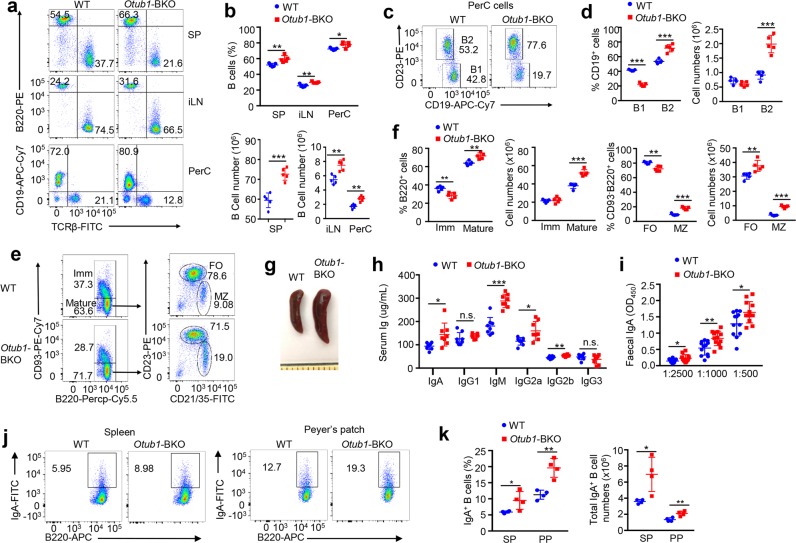Fig. 4.
Otub1-BKO mice display B-cell hyperplasia and aberrant antibody production. a, b Flow cytometric analyses of B220+ or CD19+ B cells and TCRβ+ T cells in the spleen (SP), inguinal lymph nodes (iLN), and peritoneal cavity (PerC) of wild-type (WT) and Otub1-BKO mice (6–8 months old). Data are presented as a representative plot (a) and summary graphs of mean ± SD values based on multiple mice (b, each circle represents a mouse). c, d Flow cytometric analyses of B1 (CD19+CD23–) and B2 (CD19+CD23+) cells in the peritoneal cavity of wild-type (WT) and Otub1-BKO mice (6–8 months old). e, f Flow cytometric analyses of immature (Imm, B220+CD93+) and mature (B220+CD93−) B cells as well as follicular (FO, B220+CD21intCD23+) and marginal zone (MZ, B220+CD21hiCD23−) B cells in the spleen of wild-type and Otub1-BKO mice (6–8 months old). g A representative image of spleen from wild-type and Otub1-BKO mice (6–8 months old). h, i ELISA of the indicated serum antibody isotypes (A) or fecal IgA based on multiple wild-type and Otub1-BKO mice (6–8 months old; each circle represents a mouse). j, k Flow cytometric analysis of IgA+ B cells in the spleen (SP) and Peyer’s patches (PP) of wild-type and Otub1-BKO mice (6–8 months old). Data are representative of three independent experiments. P values are determined by two-tailed unpaired t-test. *P < 0.05, **P < 0.01, ***P < 0.001

